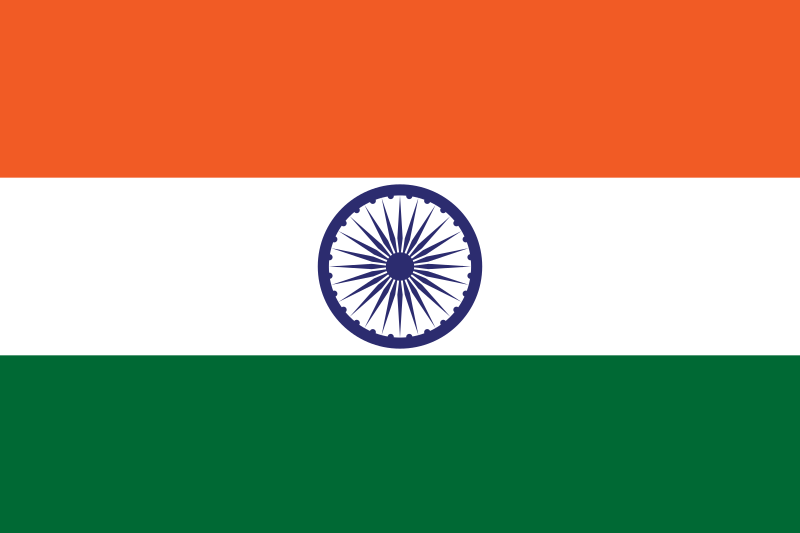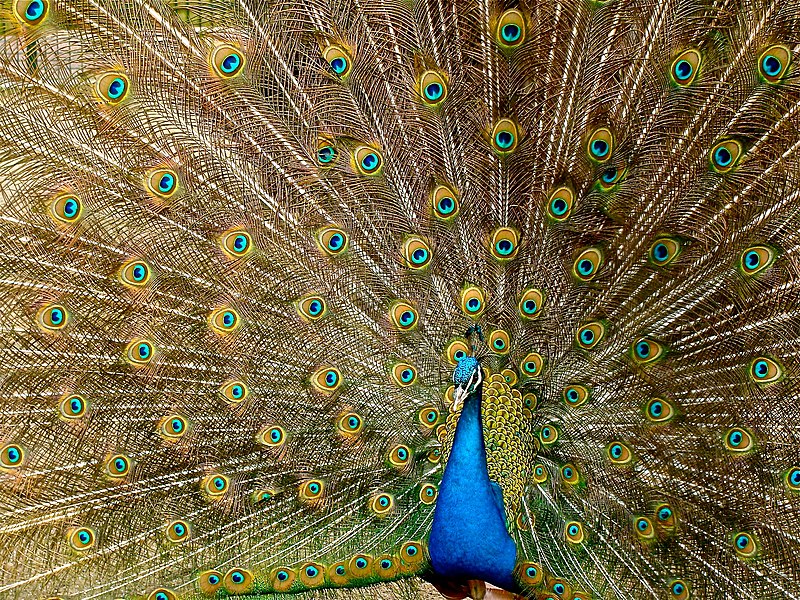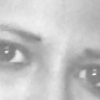People living all over the world are keen on knowing all the details about India because Indian subcontinent has in store many interesting treasures that anyone would like to know. The facts about India are highly fascinating. The area of India is 32,87,263 square kilometers and the seventh largest nation of the world and houses more than 120 crore (1200 million) people with a density of more than 350 persons per square kilometer. The capital of India is New Delhi and the official language of the central government is Hindi. The interesting fact about India is there are people of different cultures, different religions speaking different languages live here but still have the feeling of oneness and are proud of being an Indian.
History of India
If you want to know all about India, you must not miss the history of India. The history of India dates back to the days of the Indus Valley Civilization that flourished in 2,500 B. C. This was one of the largest civilizations in the world and the excavations like ornaments, toys, pottery and weapons show that Indian people of Mohenjadaro and Harappa led highly civilized life and cultivated on the banks of the River Indus. What followed after that is the Vedic period, the Buddhist era, the Mauryan Empire and Gupta dynasty.
In the medieval period many empires and dynasties ruled over the country. The Senas, the Pratiharas and the Rashtrakutas were ruling over the north and the Cheras, Cholas and Pandiyas and Chalukyas were ruling over the South. The Mughal rule followed after that and there were many other small kingdoms. The arts and architecture flourished during the rule of Mughals and Chera, Chola Pandiyas.
The British East India Company entered India as traders and in 18th century their colonization started. After long freedom struggle for more than hundred years, due to the efforts of eminent leaders like Mahatma Gandhi, Jawaharlal Nehru, Sardar Vallabhai Patel, Gopala Krishna Gokhale, Bala Ganghadhara Tilak, Rajagopalachari and many others India got its freedom on 15th August 1947.
Political Overview About India
India is one of the largest democratic countries in the world. The parliamentary system of government is in practice here. There are six recognized national parties prominent among them being Indian National Congress, Bharatiya Janata Party, Janata Dal and Communist party and more than 40 regional parties. The upper house is called Rajya Sabha and lower house is called Lok Sabha. The members of Lok Sabha are elected by people and the members of Rajya Sabha are nominated. The president is the head of the nation and the prime minister is the head of the parliament.
Boundaries and Divisions of India
India has Arabian Sea on the South West, Himalayas in the North East, Indian Ocean in the South, Bay of Bengal on the South East and Pakistan in the West as its boundaries. Burma, Bangladesh, Bhutan, Nepal, China, Sri Lanka and Pakistan are its neighboring countries. India is divided into 28 states and 7 union territories.
The 28 states and their capitals are
1. Andra Pradesh – Hyderabad
2. Arunachal Pradesh – Itanager
3. Assam – Dispur
4. Bihar – Patna
5. Chhattisgarh – Raipur
6. Goa – Panaji
7. Gujarat – Gandhinagar
8. Haryana – Chandigarh
9. Himachal Pradesh – Shimla
10. Mizoram – Aizawl
11. Jammu & Kashmir – Srinagar (Summer), Jammu (Winter)
12. Jharkhand – Ranchi
13. Karnataka – Bangalore
14. Kerala – Trivandrum
15. Madhya Pradesh – Bhopal
16. Maharashtra – Bombay
17. Manipur – Imphal
18. Meghalaya – Shillong
19. Nagaland – Kohima
20. Orissa – Bhubaneswar
21. Punjab – Chandigarh
22. Rajasthan – Jaipur
23. Sikkim – Gangtok
24. Tamil Nadu – Chennai
25. Tripura – Agartala
26. Uttar Pradesh – Lucknow
27. Uttaranchal – Dehra Dun
28. West Bengal – Calcutta
The 7 Union Territories are
1. Andaman and Nicobar Islands
2. Chandigarh
3. Dadra and Nagar Haveli
4. Daman and Diu
5. Lakshadweep
6. Territory of Delhi
7. Pondicherry
Though Hindi is the main language spoken in India, the other languages spoken are Tamil, Telugu, Urdu, Assamese, Marathi, Konkani, Gujarati, Miji, Apontanji, Merdukpen, Tagin, Adi, Honpa, Bangini-Nishi, English, Pahari, Mizo, Kashmiri, Dogri, Urdu, Ladakhi, Punjabi, Dadri, Kannada, Malayalam, Manipuri, Khasi, Jaintia, Garo, Ao, Konyak, Angami, Sema, Lotha, Oriya, Rajasthani, Bhutia, Nepali, Lepcha, Limbu, Bengali, Tripuri, Kakborak and many spoken dialects.
All About India’s Population and Economy
The economy of India is one of the fast developing in the world. Since the economic reforms initiated in 1991, India has an average annual growth of 9%. Illiteracy was a major problem few decades back. Now the literacy rate has come up with the male literacy ration of 75.85% and female literacy ratio of 54.16%. The average literacy rate is 65.38%. The sex ratio is 933 females per 1000 males.
India is the second largest populated country in the world. According to the record of 1994, 35% of the people live below poverty line. The per capita income is Rs. 6929. Agriculture is the main occupation of people in India. The major exports of the nation are textile goods, engineering goods, chemicals, leather and leather products, gems and jewelry. The major imports of the nation are crude oil and petroleum products, machinery, fertilizers, gems and chemicals. India ranks seventh in exports and eleventh in imports.
The major industries of India are cotton textiles, jute textiles, silk textiles, woolen textiles, sugar industry, cement industry, paper, iron and steel, aluminum and leather industries, fertilizer, locomotive, automobile, rubber, chemical and petro chemical, plastic and antibiotic industries. The major ports in India are Kandla, Kolkata-Haldia, Paradip, Jawahar Lal Nehru, Vishakapatnam, Marmagoa, Chennai, Mangalore, Ennore, Cochin, Tuticorin. India has got the world’s longest railway system with a total distance of 63,028 kilometers providing employment for more than 1.6 million people.
National Symbols
National Flag – Tricolor National Flag with saffron at the top, white in the middle and green at the bottom with Dharma Chakra in the center with 24 spokes.

National Bird – Peacock
National Flower – Lotus

National Tree – Indian fig tree scientific name Ficus Bengalensis also called Banyan tree
National Anthem – Jana Gana Mana written by Rabindra Nath Tagore
National River – The Ganges flowing over 2,510 kms
National Aquatic Animal – River Dolphin
National Calender – Calender based on Saka era
National Animal – Tiger
National Song – Vande Mataram composed by Bankim Chandra Chatterji
National Fruit – Mango
National Game – Hockey
National Emblem – Sarnath Lion Capital
About Indian Culture
People living here speak different languages, eat different types of food, follow different religions, dress differently and celebrate different festivals. Most of the people are living in villages and they give undue importance to their traditional customs and beliefs. There are many rituals and ceremonies in almost all religions.
The major religions in India are Hinduism, Islam, Christianity, Buddhism, Sikhism and Jainism. The people celebrate many festivals like Deepawali, Eid ul Fitr, Christmas, Pongal, Mahar Sankranti, Bakrid, Onam, Mahasivarathri, Goa Carnival, Mahavir Jayanti, Good Friday, Easter, Buddha Poornima, Muharam, Dushera, Navratri, etc.
The people of North India eat wheat based foods like chappatis, Pav Bhaji and puris and the people of South India eat rice based foods like idly, dosa, etc. The dances like Bharatnatyam, Kathakali, Odissi, etc are in vogue to depict the culture and tradition of the nation. People wear saris, cholis, chudidhars, salwar, dhotis, shirts, pants and gagras. The caste system is strong in many parts of India. The marriages and other rituals are ceremonies are conducted grandly and huge money is spent on them. Usually inter caste marriages are not allowed.
In villages women are mostly homemakers. But in metro cities women earn at par with men. But still wives give great respect to their husbands. The very important culture of India is one for one. Though there are vast diversities among the people living in this nation, they are united by the spirit of tolerance and the feeling of oneness.
Geographical Details and Climatic Conditions About India
The most important geographical detail about India is that it is a peninsula. The coastal line of India spreads about 7,517 kilometres. India houses Thar desert in the north west, Deccan plateau in the South, Western and Eastern Ghats along the east and west coastal lines, Inod-Gangetic plain in the middle and Himalayas in the north east.
The four major climates of India are tropical wet, tropical dry, subtropical humid and mountain climate. The north east monsoon and south west monsoon bring rainfall to the nation. The important rivers of the nation are Ganges, Indus, Yamuna, Krishna, Godavari, Cauvery, Thungabadra, Sabarmati, Mahanadi, Tapti, Narmada and Brahmaputra.
There are 94 national parks and 501 wildlife sanctuaries housing 89,451 species of fauna and the important ones among them are Gir forests, Kaziranga Sancutary, Corbett National Park, Vedanthangal Bird Sanctuary, Mudhumalai Sanctuary, Will Ass Sanctuary, Bandipur Sanctuary, Nagarhore National Park, Palamau Tiger Project, Kelbut Lmjo Floating National Park, Namdapha National Park, Sariska Sanctuary, Nokrek National Park, Hazaribagh National Park, Dachigam Sanctuary, Manas Sanctuary, etc.
The main river valley projects in India are Bhakra Nangal Project, Mandi Project, Chambal Valley Project, Damodar Valley Project, Kosi Projects, Mayurkashi Project, Nagarjuna Sagar Project, Tata Hydel Scheme, Sharavathi Hydel Project, Kundah & Periyar Project, Kakrapara Project, Mayurkashi Project, etc.
All About Indian Tourism
The most important facts about India that many people want to know are about Indian tourism. India is a great center of attraction for foreigners. Those who want to know all about India would definitely like to know more about the wonder of the world Taj Mahal. Taj Mahal is the main attraction of the people living in India and abroad. India is one of the five tourist hot spots of the world.

Delhi and Agra has in store vast treasures that anyone should not miss in their life. The major attractions here are Taj Mahal, Red Fort, Fatehpur Sikhri, Qutub Minar, Lotus Temple, etc. One can enjoy the beauty of nature with pure and serene environment in Kerala. The boat houses in Kerala with lakes, rivers and lagoons are world famous.
Kajuraho is situated in Madhya Pradesh is another attraction with its temples with sun gods and sacred bulls. The stone figures, superimposed figures of Gods and Goddesses and erotic structures have shot Khajuraho to international fame.
The icy rivers in the valley of Kullu with its glaciers and enchanting lakes in the state of Himachal Pradesh have made it heaven on earth. Many tourists come here to visit the innumerable shrines and monasteries of Hindu deities and Buddhist viharas. Shimla, Kullu and Manali are fantastic locations for both sightseeing and relaxing. The various opportunities of sports in this place include trekking, fishing, skiing, ice skating and golf.
The tread of golden beaches in Goa is famous for its beautiful sunshine. One can go water surfing, paragliding and snorkeling here on the gentle lapping of the waves. The Jaipur is a renowned architectural land mark called pink city. The palaces, Hawa Mahal and Johari Bazaar are important places of visit.
If you want to enjoy the spiritual climate of India, then you must visit Tamil Nadu which has numerous temples in Thanjavur, Chidambaram, Trichirappalli, Kanchipuram, Madurai, Chennai and Rameshwaram. The breath taking ancient monuments of Mahabalipuram are worth seeing. Mudumalai, Nilgiri hills and the hill stations like Ooty, Kodaikanal and Yercaud are important tourist spots.
Interesting Facts About India
1. The name India came from the River Indus. Bharat and Hindustan are its other names.
2. It is the largest English speaking nation among other countries in the world.
3. It has the biggest postal system with largest number of post offices in the world.
4. It is the largest democratic nation of the world.
5. Indian Railways is the largest employer in the world with more than 1.6 million employees.
6. Yoga originated in India
7. Computer software is exported from India to 90 countries in the world.
8. The highest cricket ground in the world is situated in Chail in Himachal Pradesh.
9. The important Mathematical concepts like Algebra, Trigonometry and Calculus originated in India.
10. It is the Indian mathematician Aryabhatta who invented zero.
Due to the variations in the economy, culture and climate India is rightly called as Indian sub-continent. This is a fast developing country with good manpower striving to become one of the major powers of the world. The unity in diversity is the guiding factor behind the scene.
Article Source :
http://www.veethi.com/articles/all-details-about-india-article-254.htm
Keywords :
all about India
,
About India
,
indian economy
,
indian culture
,
indian history




